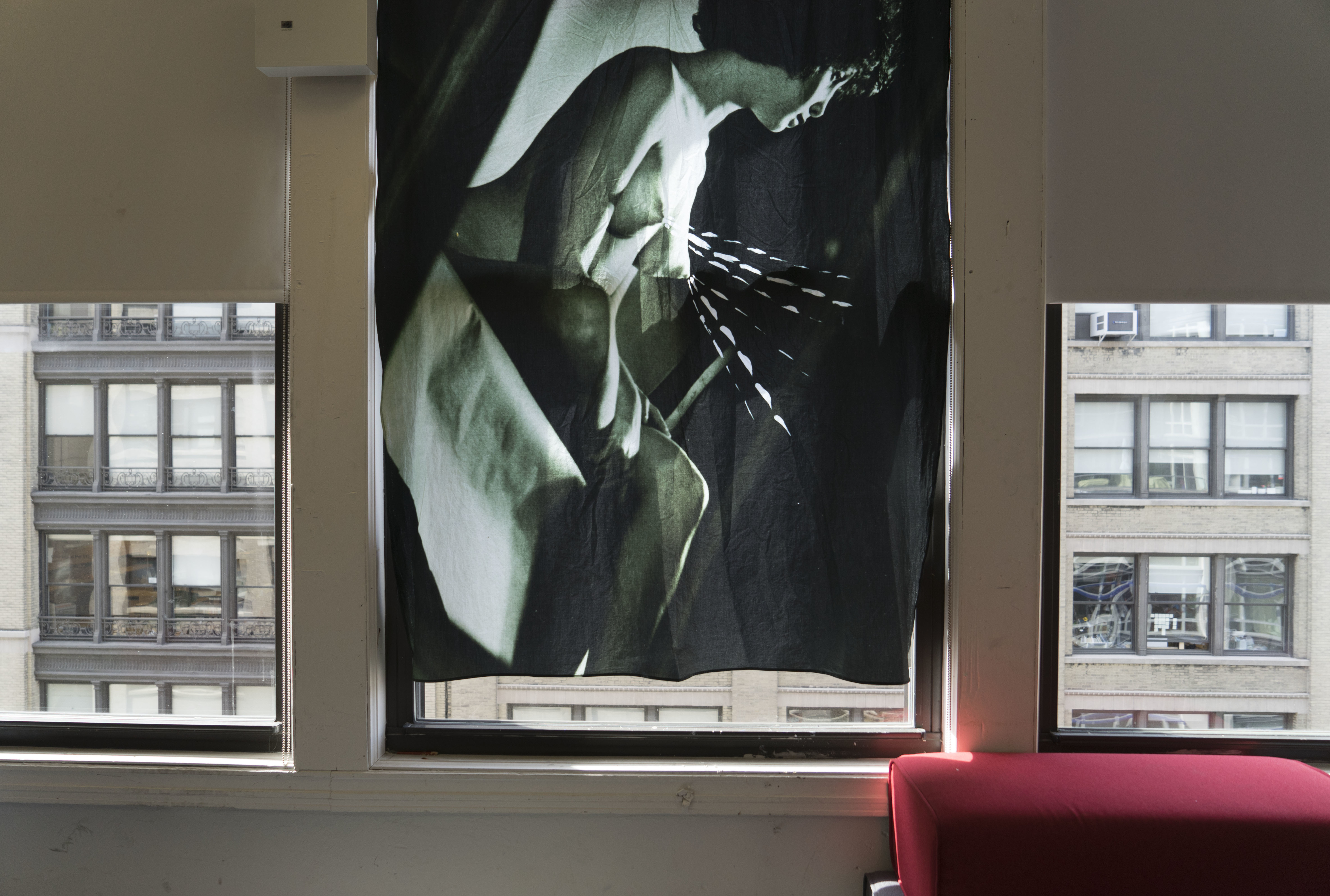 Madonna Lactans IV, 2015, Digital print on linen, 52 x 70 inches.
Madonna Lactans IV, 2015, Digital print on linen, 52 x 70 inches.Madonna Lactans I, 2015, Gouache on original darkroom print by Irving Frederick (c. 1960-1980) mounted on matboard, 11 x 14 inches.
Madonna Lactans II, 2015, Gouache on original darkroom print by Irving Frederick (c. 1960-1980) mounted on matboard, 11 x 14 inches.
Madonna Lactans III, 2015, Digital print on cotton, 57 x 78 inches.
"/>


My work re-purposes the personal artifacts of family that I had dismissed as too normal, often classifying them as the boring side of my heritage. With the discovery of a pile of amateur prints of nude models developed by my paternal grandfather in his darkroom in Long Island, I began delving into glamour photography images from the fifties to the seventies, a historically male tradition that deals with the eroticized female form. In opposition to this was the trope of the traditional suburban home and housewife, represented by my grandmother. Although I started with these portraits of women divorced from their context and identity, I have begun to turn inward and look more deeply at my grandparents’ life than I ever intended. I am continuing to realize that I had been repulsed by their conformity to traditional gendered roles and their pursuance of the typical mid-twentieth century American dream.
The series born of this conundrum is Madonna Lactans. Streams of lactation cartoonishly alter the staid nude portraits taken by my grandfather. These lines of humanity are applied in gouache in a purposefully naïve manner, often borrowing from the language of comics. The final pieces are converted into digital prints on fabric, and flanked by paintings and photographs of my grandmother, her words, her recipes, and their home. Drawing from imagery of the lactating woman across multiple cultures and eras, these interventions walk the line between delicate and crass. The final images are greater than life-size, empowering these women with a monumental presence. Depicting breast milk inserts a new narrative of power and ammunition. As humorous social critique these works remind us that the breast is never purely sexual. Our view of the female body is enlarged to encompass the complexity of its biological function. This non-apologetic approach to the female experience begins to transform a male-fantasy glamour space into a divine domestic space reinforced by fast and fluid markings.
My work often investigates the forms and definitions of feminism. This series in particular addresses objecthood: the photograph as object, the woman as object, the breast as object. Small narratives of intimate spaces play out in the texture of the fabric, referencing the Virgin Mary’s veil, the tablecloth, the curtain, the bedsheet. This, in turn, calls to mind the unpaid labor of women in the home and the conventional roles women have been prescribed. This drudgery and objectification is transformed into the language of devotion and sanctity. This is a call to worship the breast—raise up the woman in her wholeness, her entirety. There is not just one self or one narrative.